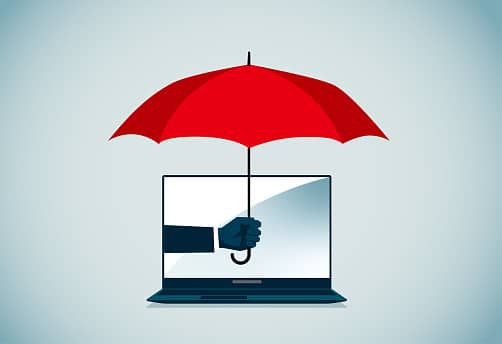A digitally connected world helps businesses of all kinds grow together.
It also creates opportunities for malicious actors to connect to those businesses.
Some small businesses aren’t aware of what threats are out there, or disregard the notion that attackers might ever target a company of their size. Others just aren’t prepared for the potential impact a threat can bring to their business.
There’s no better recent example of this than the June 2024 cyberattack that rendered CDK Global unavailable for days or even weeks, causing a severe ripple effect across the American automotive industry. Thousands of car dealerships were forced offline after CDK, their dealer management system platform, was breached and taken for ransom.
For car dealerships, June is one of their biggest sales months, and the downtime of a tool that “connects all the pieces of a dealership together” will lead to massive losses for their business.
Think about all the technology tools your business uses to produce products and services today: What would be the impact to your operations if one of those were shut down tomorrow, like CDK was?
Now think about the visibility your company has over your technology environment. Who is responsible for maintaining your systems and software tools to keep business running smoothly? What programs and systems do you have in place to keep threats away?
These are questions every business owner needs to have an answer for. And that’s why threat detection and response programs matter. Read on to learn more all about them!
Why Cybersecurity Matters for Small Businesses
Many small business owners believe they are too small to be targeted by cybercriminals.
However, this misconception can prove costly – and is the very reason hackers target small businesses!
Many small and mid-sized businesses across the U.S. are part of larger supply chains for enterprise companies. With all the digital connections between these companies required to conduct business effectively, this creates a larger surface area for hackers to access enterprise companies through a supply-chain attack.
On a closer scale though, there is still a very personal impact of a cybersecurity incident in a small business. These types of companies are typically much closer to their customers and their local communities. A breach in your business’s security may be seen as a breach of their trust in your business. That could be a hard obstacle to overcome in the future, leading to significant setbacks.
The bad news? These breaches can happen in an instant, in what’s often referred to as a drive-by compromise. A hack like this can take place as part of everyday computer activity like opening an email, navigating a website, a Google search, something like that.
The good news? Many of these drive-by compromises are preventable with effective training! Once your team members are trained on how to work and navigate their technology safely, you can put threat detection systems in place to oversee the environment and protect them from threats they may not see in the course of their work.
Understanding Common Cybersecurity Threats for Small Businesses
Small businesses face a variety of cyber threats that can compromise their operations and data. Here are some of the most common to be aware of:
- Ransomware: As in the CDK incident, ransomware encrypts the files of a user or an entire business so those carrying out the attack can demand a ransom payment to restore access to those files.
- Phishing: One of the attacks that rely most on human error, phishing involves tricking users to providing sensitive information, clicking a malicious link, or downloading a file that grants the hackers access to a business’s systems.
- Malware: This refers to any software programs that are designed to damage or otherwise disrupt computer systems, creating a vulnerability for hackers to enter through.
- Social Engineering: This is a longer process designed to manipulate individuals into sharing confidential company information or making a purchase that compromises access to the business’s systems.
- Distributed Denial of Service (DDoS) Attacks: By flooding a server or network with traffic and overwhelming it, hackers can shut down the system and affect business operations.
So now that we understand the impact that various cyber threats can have against small businesses, what can be done to defend against them?
To protect against these threats, small businesses need to build out their threat detection and response solutions.
Implementing a well-defined incident response plan ensures quick action, containing the threat and restoring normal operations. This plan should include steps for identifying the threat, isolating affected systems, and communicating with stakeholders. Many businesses who are investing in a security audit will likely implement these solutions as part of that process.
Luckily, this isn’t something you have to do alone as a business leader!
Implementing Effective Threat Detection Solutions
There’s value in layering multiple solutions as part of your threat detection and response strategy.
Think about an intruder who tries to break into your house. It would be a lot harder for them to get in if they had to climb over three 10-foot fences first. The odds of you spotting them coming before they break in would increase drastically.
We’ll talk about three tools that can be the “fences” that guard your business: basic antivirus, endpoint detection and response (EDR), and managed detection and response (MDR).
The other key part of threat detection and response is the staff you have available to maintain your systems and gain awareness over vulnerabilities and threats. For a small business, this will likely be a division of labor between full-time IT staff on your team and partnering with a managed service provider (MSP).
While bringing this IT work in-house will be the best route for some businesses, partnering with an MSP could provide them with access to talent and technology that provides a greater level of protection at a lower cost. The ConnectWise 2024 MSP Threat Report says it best: “MSPs play a crucial role in protecting SMBs from emerging threats by providing expert guidance, patch management, and cost-effective solutions.”
The talent that you have between your in-house IT staff and your partners, and the technology available at their disposal, both play a significant role in determining how quickly your business can respond to cyber threats and minimize the impact.
Antivirus, EDR, and MDR Solutions for Small Businesses
Several tools are available to help small businesses enhance their cybersecurity posture. Here’s a brief overview of how Antivirus, EDR (Endpoint Detection and Response), and MDR (Managed Detection and Response) contribute to cybersecurity:
Antivirus software is designed to detect, prevent, and remove malware. It typically works by scanning files and programs on your computer for known malware signatures, monitoring system behavior for suspicious activities, and providing real-time protection against common threats like viruses, worms, trojans, and spyware.
Endpoint detection and response (EDR) solutions go beyond traditional antivirus by offering more advanced threat detection and response capabilities. EDR systems typically monitor endpoints (such as computers, mobile devices, and servers) for suspicious activity in real time and use advanced analytics and machine learning to identify potential threats.
Managed detection and response (MDR) solutions go a stage further than EDR to combine the aspects of talent and technology together. MDR is not just one piece of software, it’s a set of systems that requires significant coordination of people and technology.
This is where you start to see elements of a more sophisticated security program: 24/7 monitoring by a team of security experts, proactive threat hunting and remediation, incident response support, and proactive security posture recommendations for improvement.
What Threat Detection Software Does My Business Need?
Having antivirus software installed on all company devices is a good starting point for basic, automated protection. It’s suitable for businesses with a low number of employees needing a simple solution, and it tends to be very easy to install and update automatically, and comes at a low cost – many tools are $30 or less per month, per user. But antivirus is really that, a starting point, and it should be supported by another, more comprehensive solution in most businesses.
EDR goes beyond basic antivirus by providing greater detail into endpoint activity and context around a specific threat, then enabling rapid response actions like isolating an infected device from a network or removing a malicious file. Many of these tools come at a similar but slightly higher price point than basic antivirus as well, perhaps $5-50 per month, per user.
For the businesses that make an investment into a MDR solution, they gain access to skilled security professionals who can effectively manage and respond to complex threats. This team will provide continuous monitoring, ensuring constant vigilance against potential attacks, reducing the risk of undetected breaches. The benefit is a well-rounded security setup that goes beyond what’s possible with an antivirus or EDR program installed on devices.
Supporting Threat Detection and Response Efforts
What more should small businesses do beyond building a program for threat detection and response around antivirus, EDR, or MDR – or a combination of those?
Combining these measures with advanced threat detection solutions creates a robust defense against cyber threats.
- Build Processes Around Password and Access Management: Creating strong passwords and enforcing security policies can prevent unauthorized access. How often do you require your employees to change their passwords? Two-factor authentication is also a low lift to implement across your business and adds an important second layer of access protection.
- Install Firewalls: These block unauthorized access to your network, while allowing data and communications that clear pre-defined security rules to pass back and forth. A proper firewall allows for filtering and controlled performance. It should balance ease of connection for your users with oversight and management by your IT team.
- Train Regularly to Reduce Human Error: Drive-by compromises are one of the easiest ways for hackers to access your business without raising too many red flags. Regular employee training on cybersecurity best practices can also reduce the risk of human error leading to a breach.
Step Up Your Security With Lighthouse
Securing your small business from cyber threats is not just about having the right tools—it’s about implementing a comprehensive strategy. Protecting your small business today means investing in the full process of prevention, detection, and response. By understanding common threats, choosing the right solutions, and taking proactive measures, you protect your business now and create space for growth in the future.
Looking for a partner who can support your Buffalo business? Lighthouse can step up as your managed service partner or work in a co-managed arrangement with your existing IT team. And if you want to hire staff to your team, we can help with that too.
You can start today by assessing your current security posture and exploring advanced threat detection and response solutions. Learn more about our managed IT services – and our full suite of managed services for small businesses – on our website.
Header photo via Joshua Bessex / The Buffalo News





